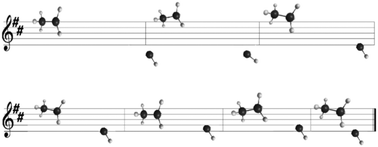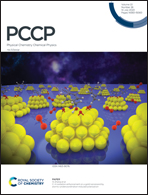Kinetics and dynamics study of the OH + C2H6 → H2O + C2H5 reaction based on an analytical global potential energy surface†
Abstract
To describe the gas-phase hydrogen abstraction reaction between the hydroxyl radical and the ethane molecule, an analytical full-dimensional potential energy surface was developed within the Born–Oppenheimer approximation. This reactive process is a ten-body system with 24 degrees of freedom, which represents a theoretical challenge. The new surface, named PES-2020, presents low barrier, 3.76 kcal mol−1, high exothermicity, −16.20 kcal mol−1, and intermediate complexes in the entrance and exit channels. To test the quality and accuracy of the analytical surface several stringent tests were performed and, in general, PES-2020 reasonably simulates the theoretical information used as input, it is a continuous and smooth potential, without spurious minima, it presents great versatility and a reasonable description of this ten-body reaction. Based on this surface, an exhaustive kinetics and dynamics study was performed with a double objective: to analyze the capacity of the new surface to simulate the experimental evidence, and to help understand the mechanism of reaction and the role of the ethyl group in the reaction. In the kinetics study, three approaches were used: variational transition-state theory with multidimensional tunnelling (VTST/MT), ring polymer molecular dynamics (RPMD) and quasi-classical trajectory (QCT) results, in the temperature range 200–2000 K. There is general agreement between the three approaches and they reasonably simulate the experimental behaviour, which gives confidence to the fitness of the new surface to describe the system. In the dynamics study, QCT calculations were performed at 298 K for a direct comparison with the only experimental result reported. We found that ethyl fragment presents a noticeable internal energy (∼20%) and so cannot be considered as a spectator. The water product vibrational energy is reasonably reproduced, though when a level-by-level distribution is analyzed the agreement is only qualitative.



 Please wait while we load your content...
Please wait while we load your content...